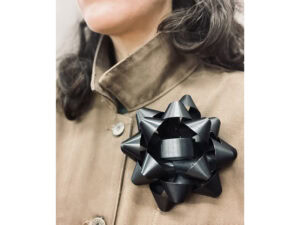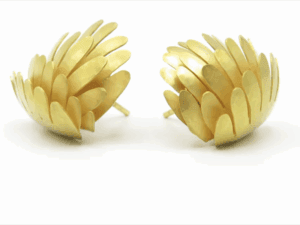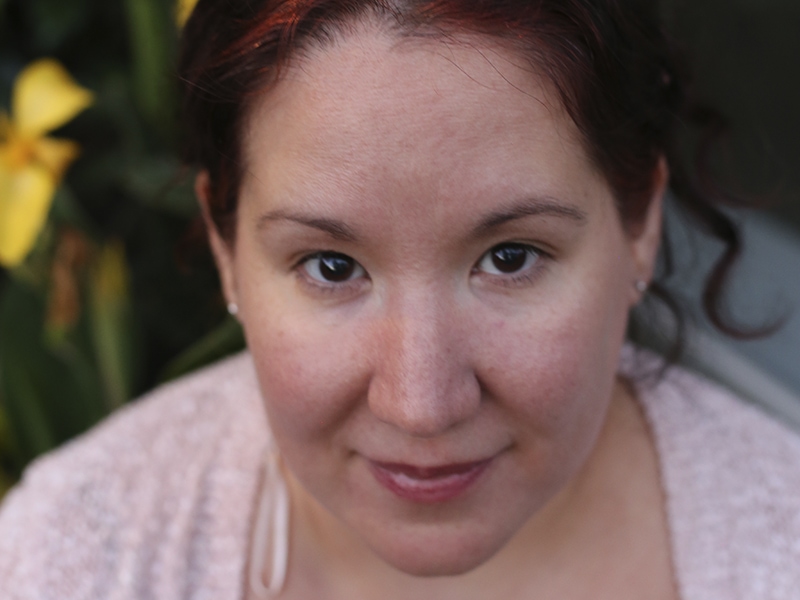
Sadly, on May 1, 2021, Valeria Vallarta Siemelink passed away. She was a dedicated champion for awareness of Latin American jewelry and design internationally. She died too young at age 49 in Portugal.
She was born in 1971 in Mexico City. There, she studied architecture and museography. Later, she acquired her MA in museography in Amsterdam. This was followed by a second MA in exhibition design from the National Institute of Anthropology and History, in Mexico City. She also got a doctorate in art history from the National Autonomous University of Mexico.
In earlier years she spent periods of time in Germany working for UNESCO. She did humanitarian work with children in Gaza. There was also a stint as a volunteer interpreter in French and Spanish in the residential program for Leader Dogs for the Blind.

During her studies in Amsterdam, Valeria met Dutch jeweler Alcides Fortes. They married and moved to Mexico. There, they established a flourishing jewelry business with 14 employees. She also met her second husband, Hes Siemelink, there. She returned to The Netherlands with him. They lived in Amsterdam and later in Hilversum. They had three children.
Over the years, an autoimmune disease that emerged in her late teens worsened. The mounting pain increasingly impacted her movements and activities. Even so, with her abundant vigor she compressed more into the years she had than most people do in a much longer lifetime. When nothing could improve her condition or ease her pain, the family left the cold and damp Dutch climate. In early 2019 they settled in warmer, drier Portugal. They hoped Valeria would find relief there.
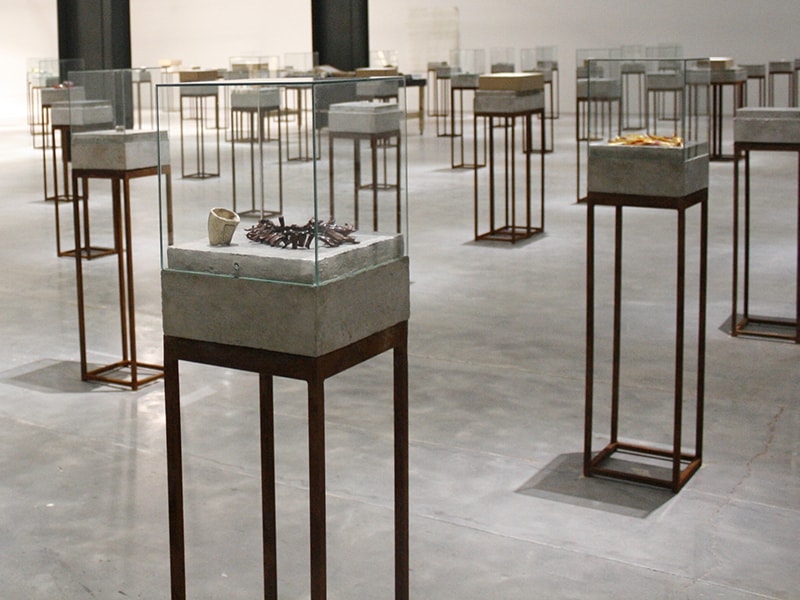
Valeria introduced herself to me during the opening of the 2008 European Triennial for Contemporary Jewellery, in Belgium. Her vibrantly warm, generous, and welcoming personality drew me to her. We stayed in contact and became friends. Her beautiful laugh, generous Mexican hospitality, and amazing culinary talents made me feel a strong connection. She had a quick wit, an open heart, humor, love. And her overall knowledge of contemporary jewelry! We were similar but also different. We both came from another country. Each had lived in at least one other country and culture before settling in The Netherlands. These experiences and our observations around them fostered a quick bond.
Valeria felt compelled to give Latin American designers and art jewelers a voice. She wanted them to be acknowledged. Valeria hoped to bring them into the fold of international design and contemporary art jewelry communities. She sought to bring them out of isolation.
Why this isolation? Art schools in Latin American countries did not and, to my knowledge, still don’t offer studies for contemporary jewelry from an arts-related standpoint. Jewelry training there remains limited to the technical domain of precious metal and stones. Arts education is directed at established art disciplines: painting, sculpture, and other media. Applied art training is geared toward objects for practical use. Latin America thus lacked a network of specialized art jewelry galleries or similar venues for publicizing and selling contemporary jewelry.
Valeria was well aware of this absence in artistic training in jewelry crafts. She saw that this situation held many Latin American artists back from entry into the established European and international networks of jewelry makers, sellers, and collectors.
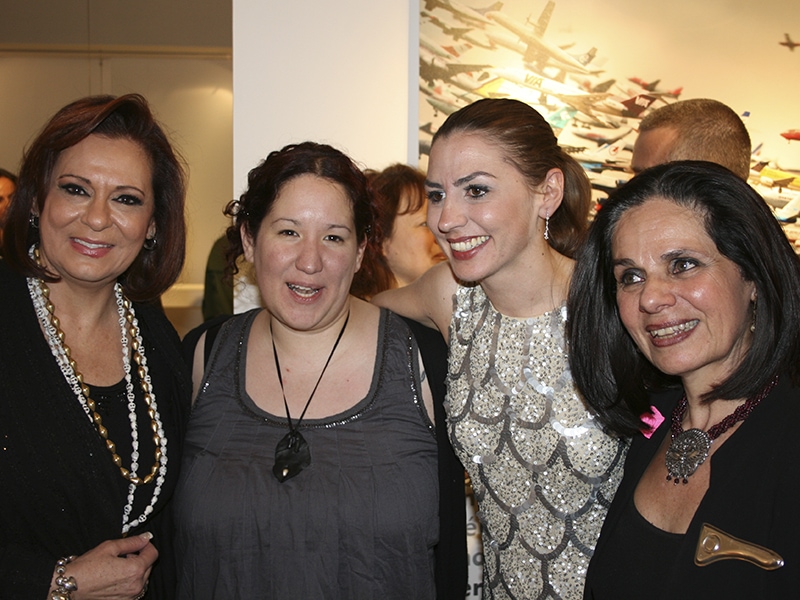
She knew many Latin American artist makers and their histories. These artists intuitively created original work that contrasted with their country’s mainstream style. They yearned for more art-based training. They desperately wanted a community of makers, galleries, collectors. Some had studied at art jewelry schools elsewhere in the world. After returning home, they found themselves confined in a creative bubble of professional loneliness. It’s difficult to continue and develop without regular creative exchanges with similarly minded makers. It’s challenging when there are no relevant opportunities to present one’s work to a pertinent public. It’s dispiriting when not even one contemporary jewelry gallery exists anywhere on the continent with the understanding or clientele for such work.
From 2003 through 2006 Valeria successfully organized a number of smaller and larger exhibitions in Amsterdam and Rotterdam. These were mainly around design and fashion. They presented work by innovative Latin American makers from different disciplines.
In 2006 she founded the Otro Diseño Foundation for Cultural Cooperation and Development.[1] Her love of contemporary jewelry ultimately drove her to concentrate on exhibiting compelling contemporary jewelry by Latin American artists in Europe.
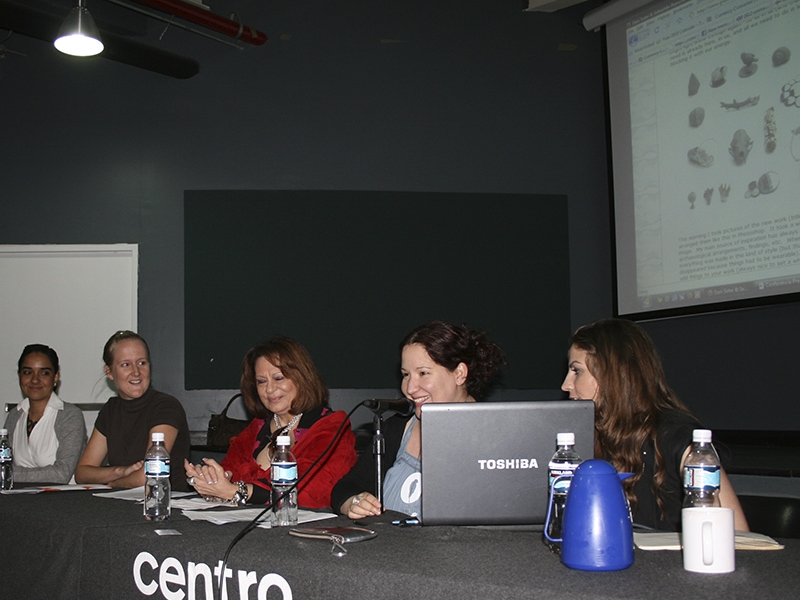
I personally witnessed a significant achievement. It touched me deeply. The symposium Gray Area[2] was a powerful milestone for Latin American jewelers. It took place in Mexico City in spring 2010. I wish to convey Valeria’s foresight and the extent to which this event represented a turning point. So I will take you to its beginning.
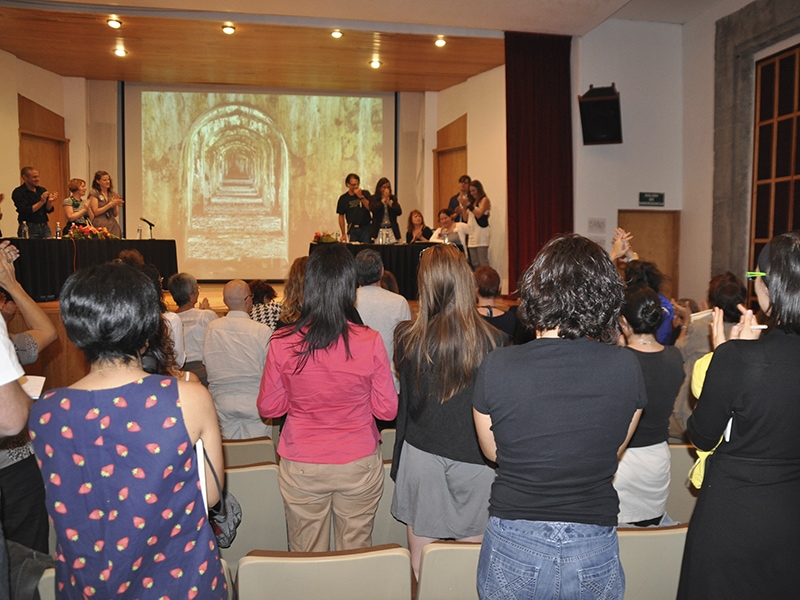
By 2009, Valeria was exploring how to bring a show of contemporary Latin American jewelry to The Netherlands. But which museums would be willing to show this type of work? She thought it more relevant to prioritize another project that could pave the way. It would be more advantageous, too. This project would be a five-day symposium in Mexico City. She called it Gray Area. It would have around 40 speakers and many panel discussions. There would be a main exhibition, Walking the Gray Area. She planned a generous number of satellite exhibits. These would be held in different venues sprinkled throughout the city. Workshops would take place during the day. There would be exhibition openings and cultural social events in the evenings.
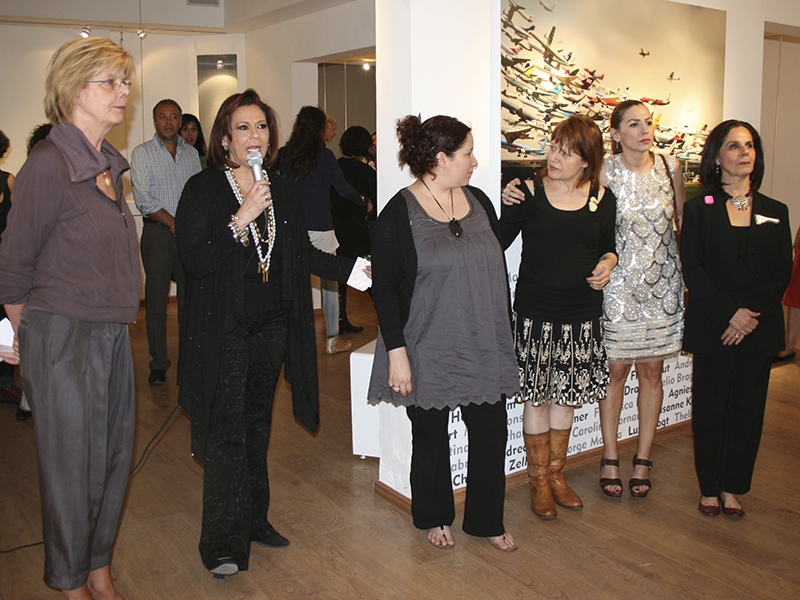
This was an exhaustive program! When I first heard the initial plans, I could not believe who was on the planning committee. It consisted of only Valeria and Carolina Rojo Rubio! Valeria was the leading planner/coordinator. She invited me to serve as second curator for the main exhibition, Walking the Gray Area.[3] It was a very exciting honor.

Walking the Gray Area paired 20 Latin American jewelry artists with 20 European jewelers. (For practical reasons, the project remained confined to European art jewelers. The limited time frame and funding prevented working with North American art jewelers.) It was important for the artists to have had a certain migrational experience and immersion in another country’s culture.
Today, almost everything seems done online, even regular meetings. This was not the case in 2009. Using an online blog to serve as an exchange platform for an art project was still very novel.
The artist pairs met up on the Gray Area Symposium blog. They used this online platform during the six months of the project. There they exchanged their reflections, experiences, and observations. They discussed the gray area of being suspended between cultures. They spoke about inspirations and work ideas for the exhibit. All of these exchanges were fully accessible to the public. That made it quite interesting.

Participants in the Gray Area Symposium were not only from numerous countries in Latin America. They were also from Europe and Northern America. Orchestrating a multifaceted, week-long event of this size, especially in Mexico City, was a distinctive feat. It seemed that, until the very last moment, Valeria was forever trouble-shooting to find alternatives to all kinds of changes and cancellations in venue or other arrangements! She took these in stride. A solution was always found. According to her, this was a normal thing in Mexico!
The event had an extraordinary effect and successive echoes on so many participants. This will, for many, represent the major part of Valeria’s remembrance. During that wonderful week of knowledge, exchange, and meeting with international colleagues, Latin American makers gave intensely enthusiastic responses. The excitement was palpable. It was reflected in the conversations I had. Never before had I felt so intensely that an event like this had such an impact.
It genuinely made a difference for so many. The symposium opened up a multitude of doors to such a large number of makers. It was wonderful. New inspiration. New contacts. New exchanges. Possibilities for development. Belonging to a community of artist jewelers larger than what they had access to before.

Yes, it was socially pleasurable. But it was so much more than an enjoyable, fruitful, inspiring meeting of minds. The Gray Area Symposium significantly moved the goal posts for jewelers in Latin American countries. It can be regarded as a milestone.
Participants were brought into closer contact with those from other parts of the globe. But most important, the reverberations were felt long after the symposium itself. Over the next few years, it helped generate various Latin American initiatives. These were fostered along and supported by Valeria through Otro Diseño.

Well-known European jewelers taught many workshops. These introduced conceptual thinking and a more experimental approach to jewelry making. There were Travelling Workshops in Mexico City. In Guadalajara there was one by HARDTOFIND jewelry school.[4] WALKA Chilean Craftmakers[5] hosted one in Santiago de Chile. Latin American jewelers began applying to international contemporary jewelry competitions in greater numbers. They enrolled in studies abroad. These institutions gave them the training and knowledge they couldn’t find back home. It’s still an ongoing process. And the paths available have become better known and traveled on by those in search of them.
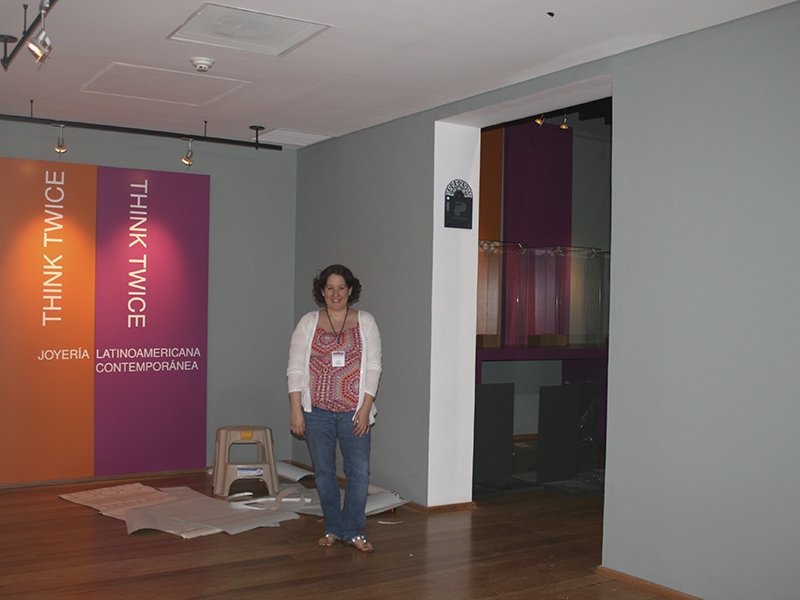
Gray Area also greatly contributed to the follow-up success of the larger exhibit Think Twice: Contemporary Latin American Jewelry. This show launched later in 2010. It toured until 2014. In the US,[6] it was on view in New York[7] and Seattle.[8] It traveled to Tallinn.[9] Museums in Mexico showed it: first in Monterrey (in the state of Nuevo León),[10] then in Torreón (Coahuila)[11] and Mexico City.[12] As a result, more of the jewelry community outside Latin America became acquainted with its talented makers. This created a more fertile ground for things to happen around jewelry in Latin America. There is now even a Latin American Contemporary Jewelry Biennial. It was held in 2016, in 2018, and now in 2021.
 Had Valeria not had serious health issues, I’m sure she would have continued full steam ahead. In 2017 she started to plan a follow-up symposium. Gray Area II would be held in Spain the following year. The working theme was close to Valeria’s heart: “disposable women,” violence against women, femicide, gender violence in Latin America.
Had Valeria not had serious health issues, I’m sure she would have continued full steam ahead. In 2017 she started to plan a follow-up symposium. Gray Area II would be held in Spain the following year. The working theme was close to Valeria’s heart: “disposable women,” violence against women, femicide, gender violence in Latin America.
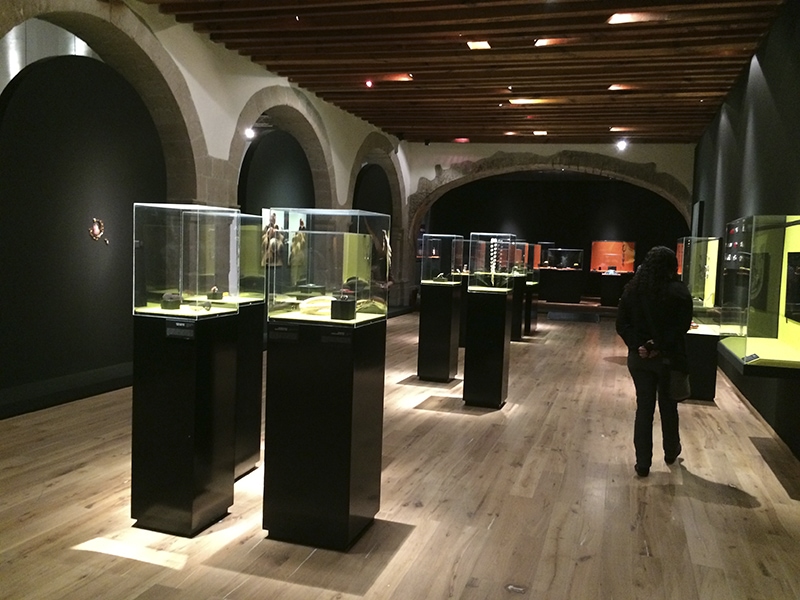
The exhibition would have brought together many more artists from around the globe. The organizing, planning, and advisory committees would have included more people. There were more potential partnerships and sponsors. Two Dutch funding institutions had already reviewed the project pre-proposal. They had given it a positive evaluation. They had pledged support to help develop a plan for a formal funding proposal.
Sadly, Valeria’s health began deteriorating rapidly and acutely in early fall of 2017. Gray Area II never came to be.
Valeria will be missed by many and warmly remembered. Her success in showing the contemporary Latin American jewelry community paths and openings to a wider stage will be part of her legacy.
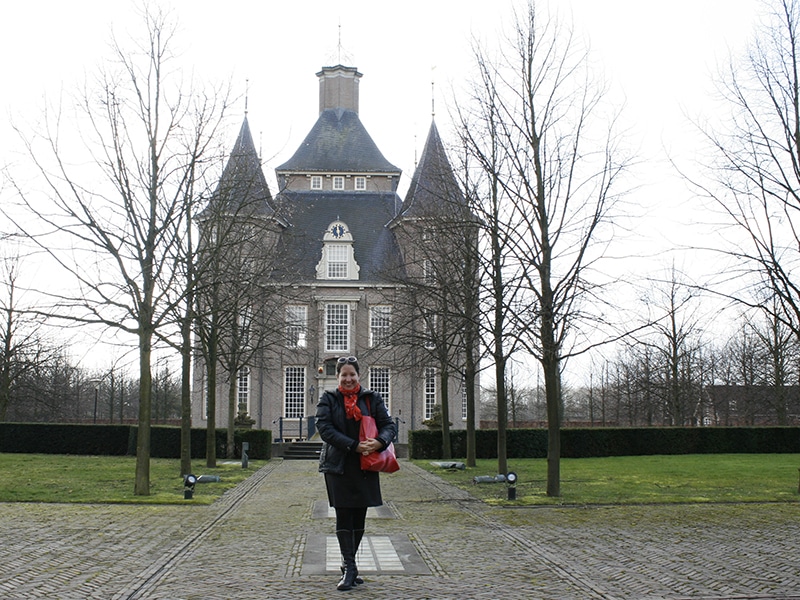
[1] https://www.otro-diseno.com/.
[2] http://www.grayareasymposium.org/select-language/.
[3] http://www.grayareasymposium.org/blog/1050.
[6] In the US, it was called Think Again: Contemporary Latin American Jewelry.
[7] At the Museum of Arts and Design, https://madmuseum.org/sites/default/files/static/ed/thinkagain_familyguide_small_0.pdf and https://madmuseum.org/press/releases/think-again-new-latin-american-jewelry-showcases-contemporary-jewelry-region-first.
[8] At the Bellevue Arts Museum, https://www.bellevuearts.org/exhibitions/past/think-twice.
[9] At the Estonian Museum of Applied Art and Design, https://kunstimuuseum.ekm.ee/.
[10] At the National Center for the Arts, https://klimt02.net/events/exhibitions/34561.
[11] At Museo Arocena, https://klimt02.net/events/exhibitions/37795.
[12] At Franz Mayer Museum, https://franzmayer.org.mx/?lang=en and https://carolinagimeno.wordpress.com/2014/06/19/think-twice-new-latin-american-jewelry/.

